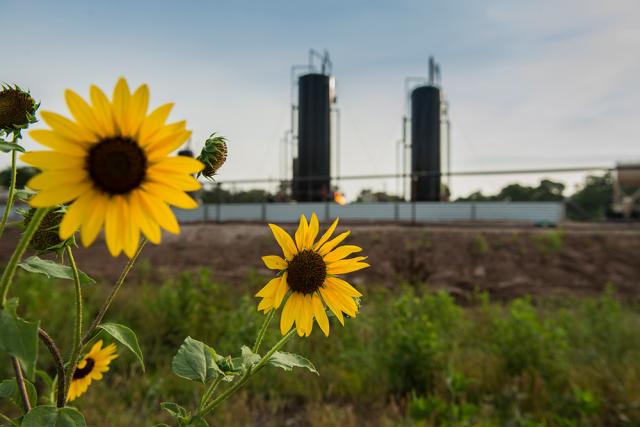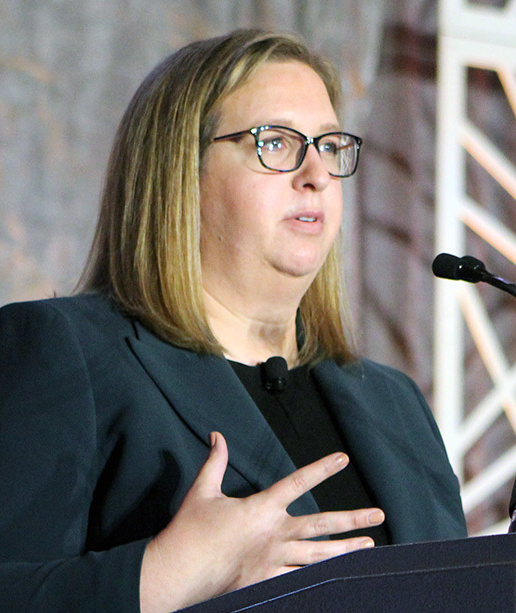
(Source: Chesapeake Energy Corp.)
HOUSTON—Already known as a pioneer of the U.S. shale revolution, Oklahoma City-based Chesapeake Energy Corp. is aiming to continue its legacy as a trailblazer in the oil and gas industry.
“We will be one of the first operators and hope to be the first operator to have responsibly sourced gas in two major shale basins—the Gulf Coast and Appalachia production,” Morgan Hager, vice president of HS&E at Chesapeake Energy Corp., said during an opening keynote address at Hart Energy’s Energy ESG Conference. “This will result in approximately 3 billion cubic feet per day of responsibly sourced gas.”

What does that mean? According to Hager, Chesapeake’s production of 3 Bcf/d of natural gas means that approximately 11 million homes in the U.S. will be able to heat their homes and have electrical power with independently certified responsibly sourced gas.
“They will know the power that is coming to their homes was done so in a way that is responsible, ethical and driving us forward,” she added.
Founded in 1989, Chesapeake Energy has experienced both the highs and lows of the oil and gas business even at one point becoming one of the largest leaseholders of shale gas acreage in the U.S.
However, after experiencing a tumultuous chapter in the company’s history that included filing for Chapter 11 bankruptcy, Chesapeake emerged from a restructuring process in early 2021 a smaller company freed of liabilities and more tightly focused on the sustainable production of natural gas primarily in the Appalachian and Haynesville shale basins.
As part of what former Chesapeake CEO Doug Lawler described as a business reset upon completing its restructuring, the company also unveiled lofty ESG goals in February including a commitment to achieve net-zero greenhouse-gas (GHG) direct emissions by 2035 and other environmental targets that would place Chesapeake on a path toward setting “a new standard of environmental excellence” in the oil and gas industry.
During her presentation on Nov. 29 that helped kick off the first-ever in-person energy ESG event, Hager gave an overview of the aggressive emissions reductions program Chesapeake has developed adding that the company is not stopping there.
In addition to forming several partnerships to certify that its natural gas is responsibly produced according to strict standards and independent verification, Hager said Chesapeake is also working with third-party vendors to validate its GHG emission calculations and methodologies to ensure the highest level of reporting.
Both shareholders and the general public are also able to view the company’s performance data and ESG program updates at a new microsite Chesapeake recently launched dedicated to the company’s ESG reporting and progress toward its climate-related targets.
“With a dedicated ESG microsite, Chesapeake’s commitment and path to delivering meaningful ESG improvements across our business are fully transparent,” Nick Dell’Osso, Chesapeake’s president and CEO, commented in a Dec. 1 release announcing the microsite.
Hager noted during her presentation on Nov. 29 how these were just a couple of examples of what Chesapeake is doing on the environmental side, which is only part of the ESG puzzle.
“The industry has always built a really strong cultural focus around protecting employees and contractors and focusing on the safety aspects of our business,” she said. “We will continue to do that through ESG and look to see that social side incorporate that safety and really be a stronghold for us.”
Recommended Reading
US Raises Crude Production Growth Forecast for 2024
2024-03-12 - U.S. crude oil production will rise by 260,000 bbl/d to 13.19 MMbbl/d this year, the EIA said in its Short-Term Energy Outlook.
Iraq to Seek Bids for Oil, Gas Contracts April 27
2024-04-18 - Iraq will auction 30 new oil and gas projects in two licensing rounds distributed across the country.
E&P Highlights: Jan. 29, 2024
2024-01-29 - Here’s a roundup of the latest E&P headlines, including activity at the Ichthys Field offshore Australia and new contract awards.
Seadrill Awarded $97.5 Million in Drillship Contracts
2024-01-30 - Seadrill will also resume management services for its West Auriga drillship earlier than anticipated.
Oceaneering Won $200MM in Manufactured Products Contracts in Q4 2023
2024-02-05 - The revenues from Oceaneering International’s manufactured products contracts range in value from less than $10 million to greater than $100 million.



